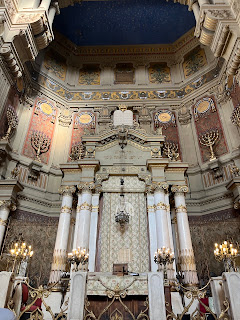The experience left a lasting impression on my spiritual journey. During our discussions in class, we reflected on the complex history, conflicts, and reconciliation between the Catholic Church and the Jewish community. Efforts have been made to promote understanding, respect, and cooperation between the two communities, and significant milestones such as the Second Vatican Council have contributed to improving Catholic-Jewish relations, especially in enhancing the Catholic attitude towards Judaism. Despite theological and historical differences, ongoing initiatives aim to foster dialogue and combat anti-Semitism and religious discrimination. While challenges remain, the visit reinforced the importance of mutual understanding and respect for "other" people's religious beliefs. Notably, we don't have to have the same religion to get along peacefully!
Until next time!
God bless!

Comments
Post a Comment